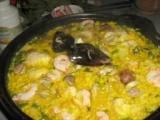work travel
Summer Work and Travel
Work and Travel
For a group of teenagers it was a summer they would never forget: traveling and working ABROAD!
Nine high school students from Romania signed up for a program that placed them with three host families in Seville, Spain.
Off We Go
With everything set, the group flew to Barcelona, then took a train to Seville. There they were greeted by the local coordinator and their hosts.
Besides the language, Cosmin, one of the students, said his first impressions of Seville was how HOT it was (about 35 C in late-July).
Their Hosts
The four girls along with their chaperone, Mrs. Olesea, an English teacher, where split among two female homeowners. The five boys meanwhile stayed with another woman, Katie.
Originally from Romania, Katie spoke fluent Spanish, on account of her having lived in Spain for the past 10 years, and another 20 in Cuba (where she had provided technical assistance during communism).
These days she lets rooms in her home to backpackers, while her father delivers a Romanian-language newspaper to fellow expats.
New in Town
For the next few days, the hosts showed the students around town.
They marveled at the Guadalquivir River, navigable by ocean ships, and the ubiquitous palm and orange trees that lined the streets.
On the Job Training
When it came to business, four of the students were assigned to a hotel where they served as front desk clerks.
Their supervisor was a young woman from the Netherlands. “She could speak English, French, German, Spanish as well as Dutch. And she even began learning Romanian,” said Denisa, another student.
Continental Breakfast
Meanwhile the other students were placed in different hotels where they helped out in the reception or the restaurant.
Cosmin, for example, bussed tables during breakfast and brunch. The fare consisted of melons, croissants, cheese, coffee and orange juice.
Exploring
During their off hours the teenagers continued their exploration of the city. They visited the Seville Cathedral. Completed in 1519, it is the third largest building in Europe, after St. Peter’s Church in Rome and the Basilica in Lourdes, France.
The cathedral’s bell tower, and Seville’s emblem, is the 91 meter Giralda.
Visitors can see Moorish influences in the remnants of the old city wall, the network of small, shaded streets, and houses with balconies, courtyards and fountains.
Communication
The students also got to know the locals. Though Cosmin felt he had aced Spanish in class, he found communicating with natives to be a different story. “They speak very fast,” he observed. Furthermore most lacked a working knowledge of English.
Visits
Olesea noted how people there had strong family ties. “Angustias (her host) would call her mother every evening. Relatives and friends dropped by on a whim, unannounced.”
This presented a perfect opportunity for Olesea and the students to get to know them. Angustias in turn would bring her guests along on visits to her friends’ homes.
Local Cuisine
And unlike the teenagers, whose favourite haunt in Seville was…*burger joints*, Olesea delved into the regional cuisine.
She visited marketplaces with their fresh, colourful produce, seafood, cheese and spices.
In the kitchen, Angustias showed Olesea how to prepare various traditional dishes. Among them was paella, rice cooked with garlic, saffron, and in the seafood version, white fish, shrimp and mussels.


Her brother-in-law meanwhile demonstrated the making of sangria, a punch consisting of red wine, soda water, fruit juice, and diced fruit.
Souvenirs
When it came time to leave, the students went shopping for souvenirs. In the end, everyone got miniature toros (bulls). “I have so much to tell my friends back home,” said Denisa.
1. The students just picked up and went to Spain. True or false?
2. Where did they room? Did they stay in hotels?
3. The boy’s host had an interesting background. Yes or no?
4. Did the girls’ supervisor have any notable skills?
5. Cosmin cooked bacon and eggs for the guests. True or false?
6. What were some of the attractions that the students visited?
7. Could they easily communicate with the locals?
8. Did Mrs. Olesea make new friends? How?
9. How did the teacher and the students approach the local cuisine?
10. What presents did the students take home to their families?
A. Have you or your friend had summer jobs or a part-time job? If yes, what did you or your friend do?
B. Have you traveled abroad? If yes, where?
C. Would you like to live and work abroad for the summer—or longer?


